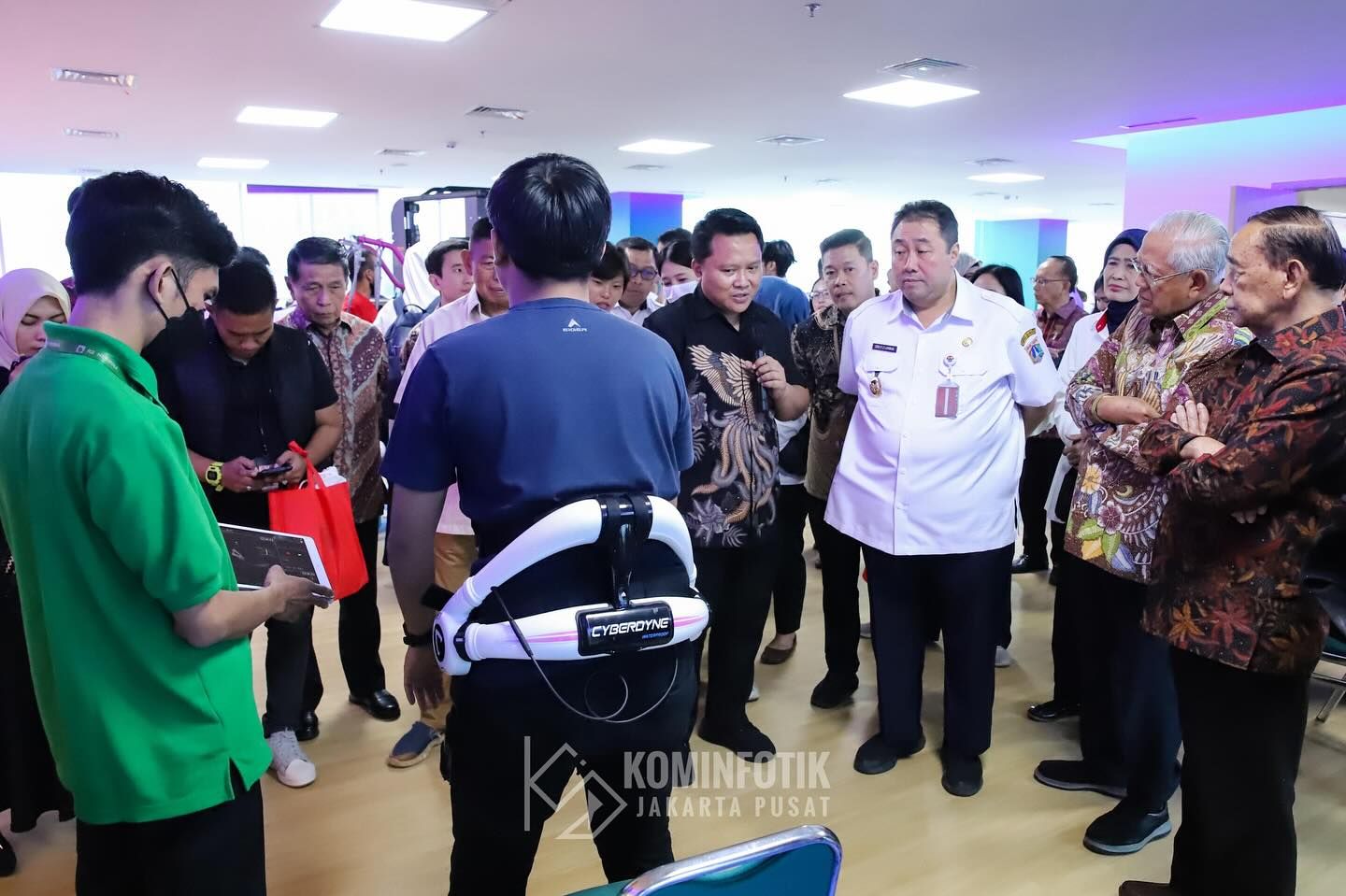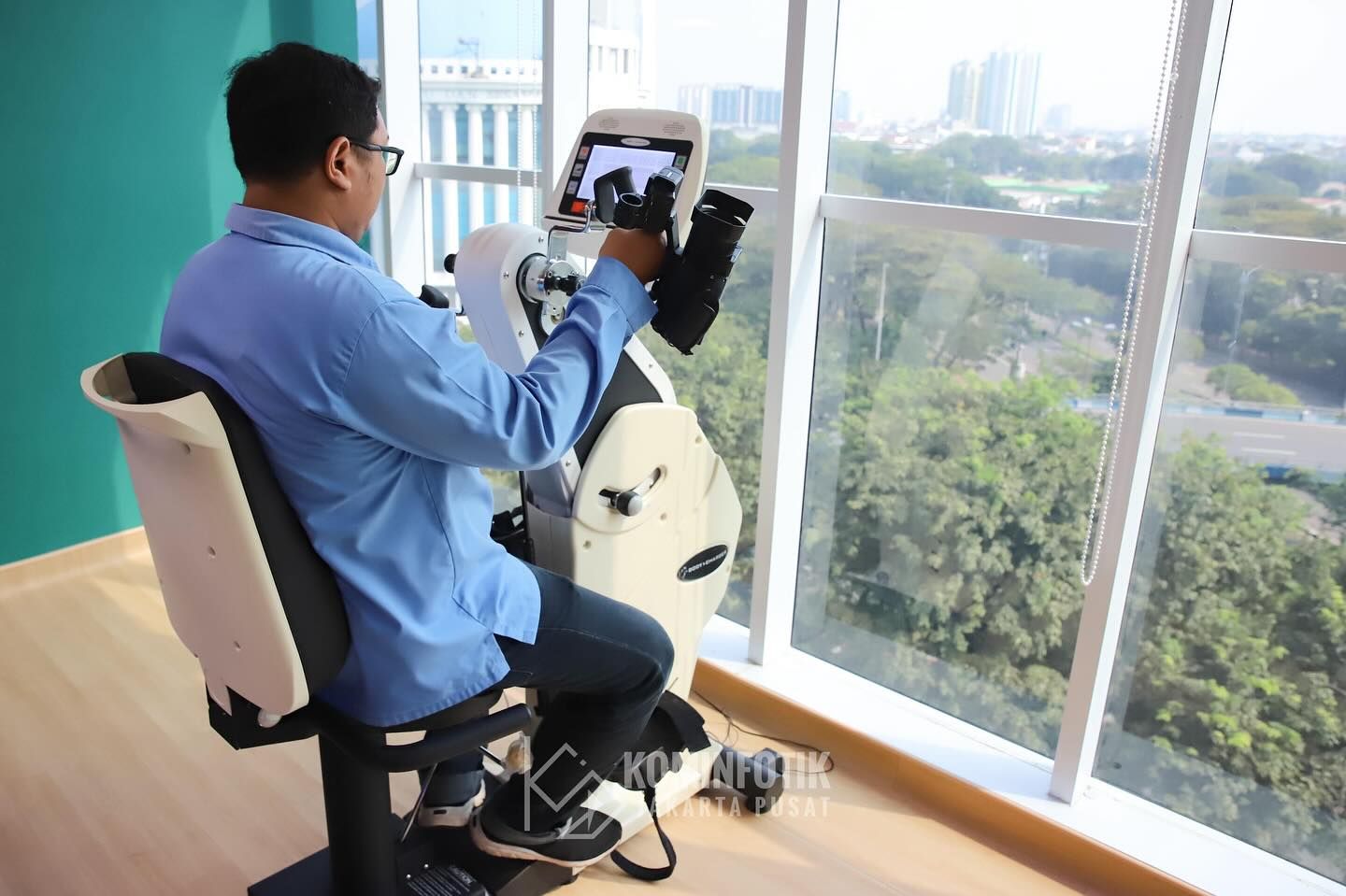Robots for rehab: Hermina Hospital launches robotic centre for stroke and surgery recovery
)
Robotics, such as exoskeletons, deliver customised rehabilitation treatment with improved precision and shorter recovery times.
The integration of robotics in rehabilitation is gaining momentum amongst hospitals in Asia. Advanced robotic systems – such as exoskeletons or end-effector based robots – have proven effective in supporting the recovery and enhancement of motor functions in patients, especially those with neurological and orthopaedic conditions, or recovering from strokes.
In July 2025, Hermina Kemayoran Hospital in Jakarta inaugurated its new Robotic Rehabilitation Centre, the first such facility within Hermina Hospitals Group’s network of 52 hospitals in Indonesia. A new Sports Clinic was also launched, offering injury prevention, recovery, and performance enhancement services to professional athletes and the community.
Optimising rehabilitation with robotics
“For stroke survivors, the perfect time to begin robotic-assisted medical rehabilitation is when they return home. This period is known as the golden period, when organ function has not yet suffered permanent damage, making it easier to recover in a relatively short time,” said Dr. Hasmoro, President Director of PT Medikaloka Hermina.
The Robotic Rehabilitation Centre is supported by Japan’s Hybrid Assisted Limb (HAL) technology. Through electrodes or detectors attached to the skin surface, HAL detects weak bioelectrical signals sent from the brain to muscles to perform the user’s intended movement. Three types of HAL treatments are available at the Centre, focusing respectively on helping users regain walking ability, strengthen arm and knee joints, and enhance lumbar muscle strength.

The adoption of robotic rehabilitation devices builds on Hermina Kemayoran Hospital’s existing expertise in rehabilitation and stroke care, positioning the hospital as a premium healthcare provider equipped with the latest and most advanced therapies, said the hospital.
Besides the robotic unit, the Centre also hosts a gymnasium, physiotherapy, speech therapy, and occupational therapy services, staffed by a team of specialist, subspecialist and allied health professionals.
This helps meet growing demand targeted and precise rehabilitation therapy, from patients in the region recovering from strokes, surgeries, or sports injuries, noted Director of Hermina Kemayoran Hospital Dr. Roni Albert Wijaya. The hospital has seen its number of rehabilitation patients soar from 19,000 in 2022 to almost 30,000 in 2024.
Benefits of robotic rehabilitation
Robotic rehabilitation promises benefits on several fronts. For the patient, robot-assisted therapies offer customised recovery plans that can be tailored to complex needs, with improved precision and shorter recovery times.
Acting as a ‘digital personal trainer’, robotic systems help stroke patients recover lower limb movement in a precise, safe and measurable manner, throughout their recovery process from sitting, to standing, and finally walking again.
Patients can also look forward to a more interactive rehabilitation process, through gamification and virtual reality within the devices.

Meanwhile, for physiotherapists, these systems reduce their workload and enable more effective tracking of patient progress.
As for the hospital, the use of these devices reduces therapy costs by increasing the efficiency and effectiveness of rehabilitation. Shortened recovery time also contribute to lower overall patient care costs.
The outlook for robotic rehabilitation
The rapid advancement in robotic technology is set to drive further adoption in healthcare settings in the coming years, said the hospital.
“The market for robotic rehabilitation devices is expected to continue to grow, with widespread adoption in hospitals, rehabilitation clinics, and even for personal use at home.
“Continued developments in artificial intelligence, robotics, and increased accessibility (to care) will open up significant market opportunities, and enable healthcare providers to improve patient outcomes and quality of life through advanced technologies.”

